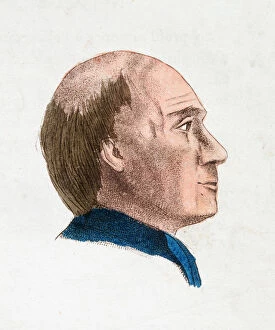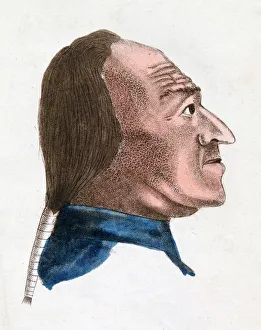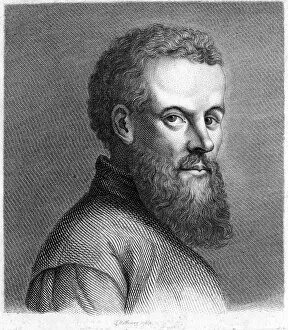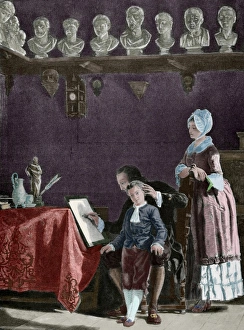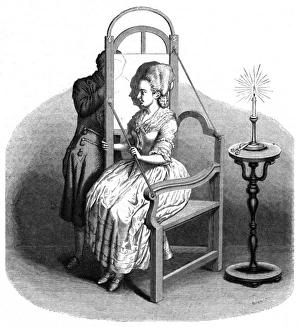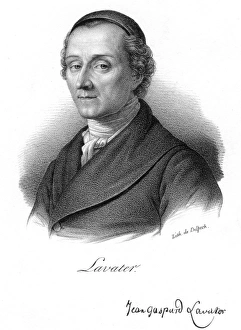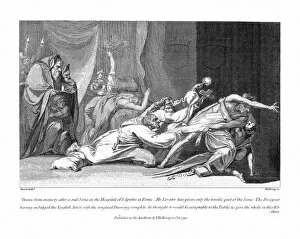Lavater Collection
Johann Kaspar Lavater (1741-1801) was a renowned poet and physiognomist, known for his groundbreaking work in the field of facial characteristics
All Professionally Made to Order for Quick Shipping
Johann Kaspar Lavater (1741-1801) was a renowned poet and physiognomist, known for his groundbreaking work in the field of facial characteristics. His studies on human faces and their correlation with personality traits have left an indelible mark in history. In the engraving titled "Lavater, " we catch a glimpse of the man himself, captured during one of his introspective moments. The image portrays him deep in thought, surrounded by books and papers that undoubtedly contain his profound musings on physiognomy. Another engraving, "Lavater in his study, " offers us a more intimate view into Lavater's private sanctuary. Here, he is seen engrossed in his research, perhaps unraveling the mysteries hidden within each face he encounters. "Lavater at Home" presents us with an intriguing depiction of this influential figure within the comfort of his own abode. It allows us to imagine him contemplating life's complexities while being enveloped by familiar surroundings that nurtured his intellectual pursuits. A portrait from around 1810 showcases Lavater as both poet and physiognomist—a man whose words were as powerful as his observations. This captivating image captures not only Lavater's physical appearance but also hints at the depth of wisdom contained within him. One particularly fascinating study from 1782 explores four silhouettes—an artistic representation that encapsulates Lavater's fascination with capturing individuality through facial features alone. It serves as a testament to his dedication to understanding humanity through its external manifestations. The series depicting various facial characteristics—melancholic, loafer-like, strict and intelligent, philosophical and profound—reveals Lavater's relentless pursuit to decode human nature visually. Through these intricate illustrations created by none other than Lavater himself, we gain insight into how he classified individuals based on their unique physical attributes.












